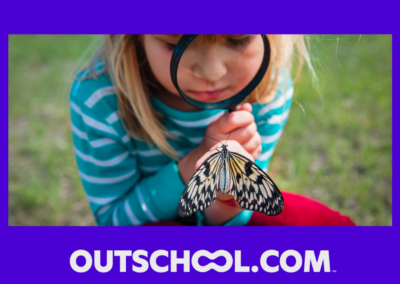Welcome to the fifth video of our Retention Boot Camp! This on-demand webinar focuses on actionable strategies to enhance learner retention. The goal is to inspire you with ideas that are easy to implement and tailored to your unique teaching style. Remember, retention is not about quick fixes—it’s about building strong, lasting relationships with learners and their families.
As we dive in, keep this in mind: Take what you need and leave the rest. We’ll cover a variety of best practices, but you don’t need to implement all of them at once. Experiment with different strategies, see what works best for you, and adapt them to fit your class structure.
Key Topics for this Webinar
We’ll address six key areas of retention:
- Frequency of Communication
- Content of Communication
- Tone and Style
- Platforms for Communication
- Crisis or Urgent Communication
- Managing Expectations
Each section includes best practices to help you refine your processes and engage families effectively.
1. Frequency of Communication
Consistent communication helps build trust and keep families informed. Here are some best practices:
- First-Class Onboarding Messages:
For a learner’s first class with you (or on Outschool), send a personalized welcome message. Include:- Expectations for class (what’s needed before, during, and after).
- The schedule and how to join the session.
- Learning goals and what the learner can look forward to.
Consider making this a video message for a personal touch.
- Progress Updates:
Share updates weekly or monthly, depending on your class structure. Highlight:- Learner progress and areas for improvement.
- Upcoming goals or class topics.
- Class Reminders:
Send reminders 24 hours before class to ensure families have time to prepare supplies or adjust schedules. This complements Outschool’s automated reminders. - Post-Class Recaps:
Summarize what was covered, assignments (if any), and what to expect next. This reinforces learning and connects the class experience to home. - Milestone Updates:
Celebrate key achievements with personalized messages to families. These updates help families see tangible progress and feel more invested in the class.
2. Content of Communication
The content of your messages should be both engaging and informative:
- Personalized Progress Reports:
Include both quantitative (objective measures like quiz scores or milestones) and qualitative feedback (anecdotal insights about learner engagement or challenges). - Multimedia Enhancements:
Use videos, images, or voice memos to make feedback more interactive and personalized. Tools like Loom can help you record quick, COPPA-compliant feedback. - Goals and Action Plans:
Collaborate with learners to set actionable goals and communicate these to families. Involving learners in goal-setting fosters ownership and motivation. - Educational Resources:
Share articles, videos, or activities that complement your class topics. These reinforce learning and strengthen the connection between home and class.
3. Tone and Style
How you communicate is just as important as what you communicate:
- Consistency and Clarity:
Keep messages concise, professional, and easy to understand. Avoid overwhelming families with overly long emails. - Tailored Tone:
Adapt your tone based on your audience:- Friendly and approachable for younger learners.
- Professional and formal for parents and guardians.
Model quality writing to set an example for learners.
- Two-Way Communication:
Invite feedback from learners and families. Showing that you value their input fosters trust and collaboration.
4. Platforms for Communication
Match the message to the platform to ensure clarity and effectiveness:
- Grown-Up Messages:
Use these for official business, like personalized updates or next-step recommendations. - Learner Messages:
Send casual check-ins or feedback. Keep in mind that these messages are visible to grown-ups. - Lesson Posts:
Draft these ahead of time in alignment with your syllabus. Automating these can reduce your workload. - Classroom Announcements:
Use these for updates that apply to the entire class, such as schedule changes or supply lists.
5. Crisis or Urgent Communication
Handling unexpected situations effectively builds trust:
- Immediate Issues:
Address learner struggles or class concerns promptly. Be specific about the issue, propose solutions, and outline next steps. - Technical Changes:
Inform families about any changes to resources, tools, or schedules as soon as possible. - Proactive Updates:
For potential disruptions (e.g., severe weather), inform families early to manage expectations and reduce stress.
6. Managing Expectations
Setting and managing expectations helps build positive relationships:
- Set Boundaries:
Communicate your business hours and response times clearly. This ensures families know when and how to reach you without overstepping boundaries. - Be Transparent About Progress:
Provide realistic timelines for learning. For example, mastering a new skill or language takes time. Setting clear expectations helps families appreciate the learning journey.
Why Retention Matters
Retention is about more than keeping learners enrolled. It’s about understanding why families stay with you and fostering that connection through thoughtful communication and strategic practices. By implementing these strategies, you can enhance satisfaction, build loyalty, and grow your business.
Next Steps
- Explore Additional Resources:
Visit the Retention Boot Camp Padlet for templates, microlearning videos, and other webinars. - Reflect and Act:
Take time to review the best practices shared today. Start with one or two strategies and experiment to see what works for your unique teaching style. - Join the Conversation:
Share your progress and insights with fellow educators. Collaboration can inspire new ideas and approaches.
Thank you for tuning into the fifth session of our Retention Boot Camp. We’re excited to see how you’ll apply these strategies to grow your business and create lasting relationships with learners and their families. Happy teaching!




















